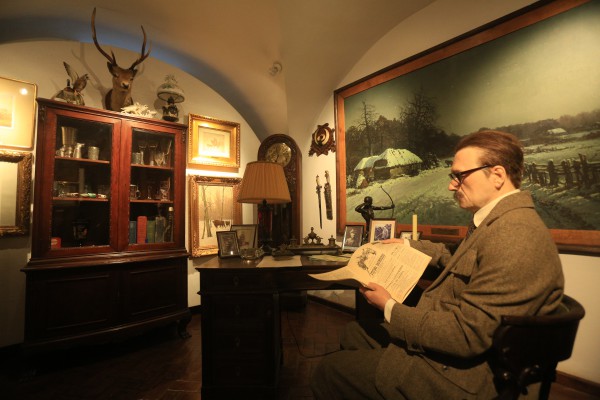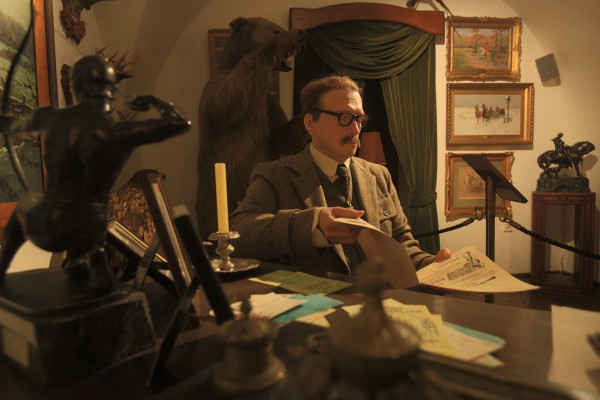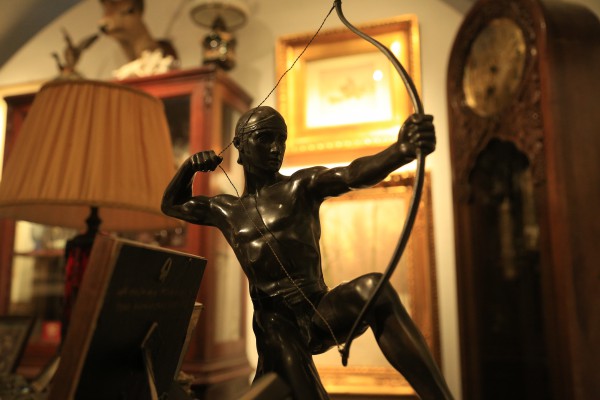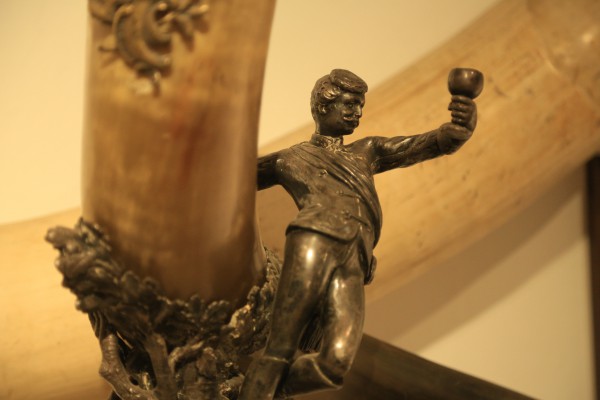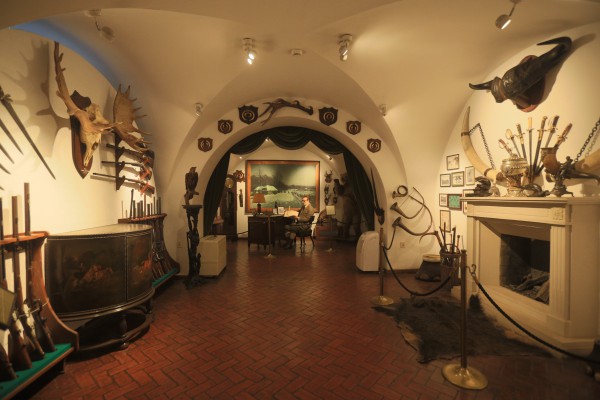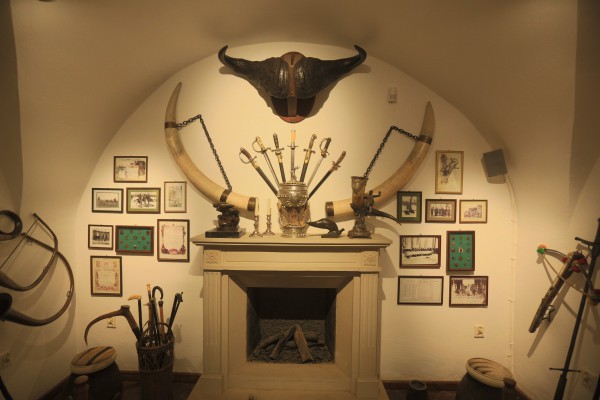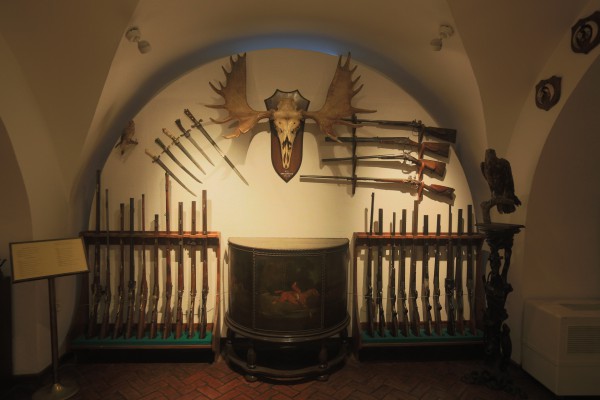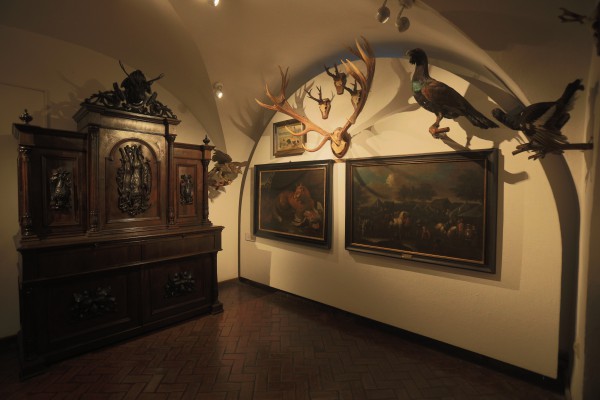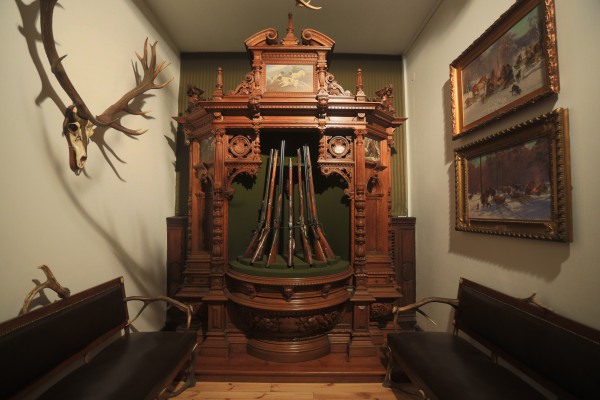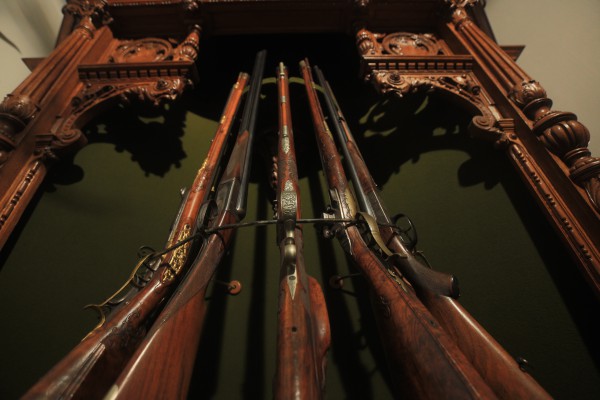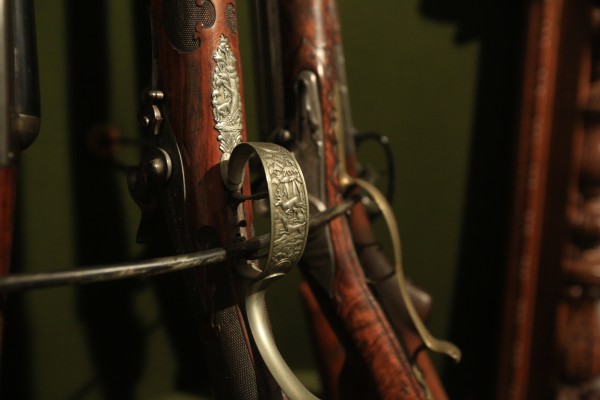
Polish Hunting Room of the 19th and 20th Century

This exhibition will immerse you in the atmosphere of old manors and palaces which are non-existent nowadays. It shows "the man’s room", where through generations successive owners collected family mementoes, mostly connected with hunting. Following the example of old "overloaded" rooms, the space and walls are filled with a vast number of objects. These are in particular the trophies which attract the visitor’s attention. The oldest and at the same time the most precious and impressive trophies are worth noting: The wild boar’s tusks from Rychcice (1929), the antlers of the buck from Nienadowa (1896), red deer’s head (1907) or elk’s palmate antlers (1938). The massive horns of the African buffalo, presented as elephant tusks, and other exotic trophies grouped around the fireplace, remind of expeditions to great safaris which were so popular at the turn of the 19th and 20th centuries.
In the living-room, visitors can also admire a collection of hunting firearms. Several dozen items allow to trace the history of development of various systems: From arquebuses with circular locks from the 17th c. though rifles with flintlocks or caplock mechanisms to breach loader needle hunting rifles from the 20th c. Decorated with a relief, inlaid and finely carved hunting arms often represent a great artistic value reminding us of the artistry of old craftsmen.
The furnishings of the study are supplemented with other accessories and hunting items (horns, hunting horns, powder flasks, cutlasses), as well as knick knacks and a series of small everyday objects: pipes, watches, stationery, books, glassware, silverware, porcelain.
Moreover, the interiors are ornamented with paintings. Departures for and returns from hunting in many variants, favourite horse rides, portraits of hunters, landscapes, animals, still life paintings. All this is shown on canvas by many renown Polish painters, including Juliusz and Wojciech Kossak, Michał Wywiórski, Ryszard Okniński, Kazimierz Pochwalski. Their works form a source of rich hunting iconography, invaluable documents and chronicles of past colourful customs.
The homogeneous character of the room, associated with broadly understood nature, is also underlined by animalistic sculptures. They include bronze casts, in which despite the hardships of that complicated technique, artists managed to splendidly portray not only the beauty and diversity of animal shapes, but most of all their characters and emotions. You might perfectly recognise the vigilance of the buck, the calm and seriousness of the bison or the virulence of dogs attacking a wild boar.
